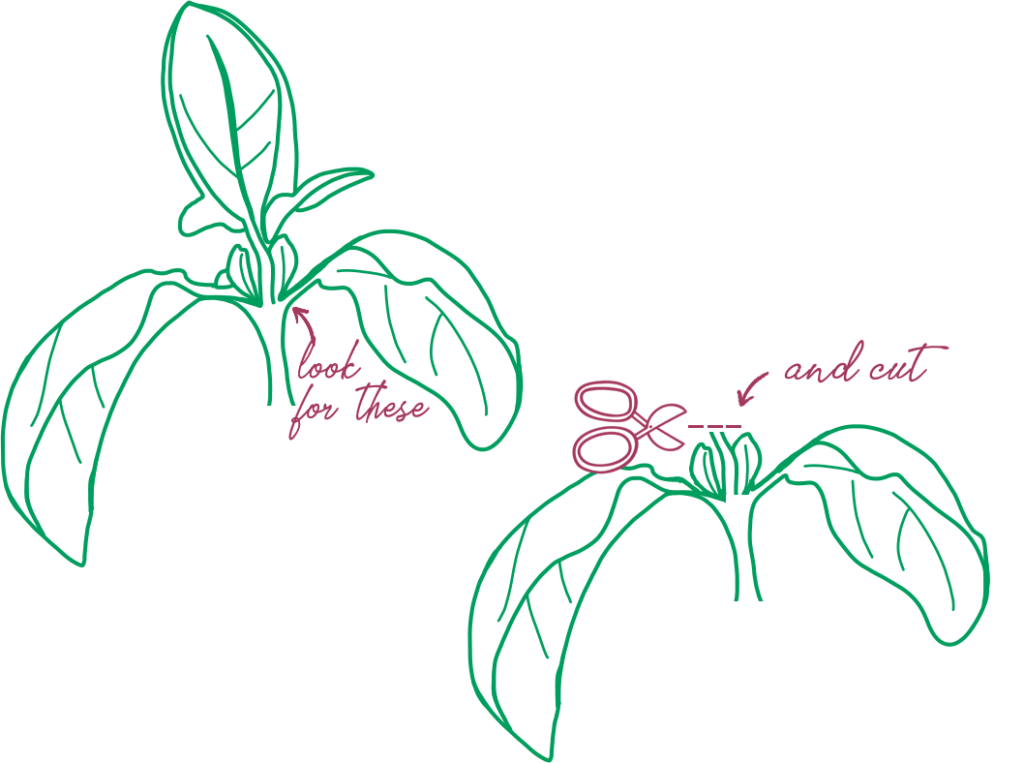Basil
Latin name: Ocimum basilicum
🌱 Days to Sprout: 5-21
😋 Ready for Full Dose of plant food with true leaves or roots .5-inch long
✂️Thin to: 3 plants per yCube
🍅 Days to Maturity: 68
💡 Light Zone: Medium
📏 Plant Size: <1 ft
💚 Care Level: Beginner
Origin
People in India were the first to domesticate Basil. In 300 BC, it's believed Alexander the Great introduced Basil to the Occident. The Greeks immediately adopted its use, as did the Romans later on. Today, Basil is a key ingredient in Mediterranean cuisine. The Greek word for Basil, Basilikos, means "royal plant" or "little king".
Qualities
Basil has been used for centuries as an aromatic herb for its outstanding taste, but it also contains many nutrients. Basil is high in vitamin K, which supports healthy bones and blood, antioxidants that protect your cells against free radicals, and iron for healthy red blood cells and neurotransmitters. Basil is also thought to have antibacterial properties, accounting for its centuries-old use in balms to heal wounds.
Use
Basil is an outstanding way to add flavor to pasta, pizzas, or salads. It's also delicious in pesto. Enjoy Basil flowers sprinkled over any meal.
Care & Harvest
💡Temperature: Prefers warmer temperatures (70-85°F).
✂️ Pruning: Remove leaves with brown spots if they appear. Check the roots monthly and trim any that are brown or extending past the yPod. For bushier growth, regularly harvest at the stem above the growth nodes (see Harvest below). To delay bolting, pinch off flower buds as they appear.
Flower buds on Basil
🔎 Plant Health: Aphids are a common pest, but you can use our prevention and treatment tricks to keep pests at bay! Root rot and Downy Mildew are also common diseases best controlled by regular root checksand removing any leaves with brown spots as they appear.
🌿 Harvest: Harvesting frequently helps prolong the plant's life. Pinch off individual leaves, or use clean shears to cut stems above growth nodes. Find growth nodes just above the two largest leaves on a stem. You should see another, small set of leaves or knobs (nodes) growing between the stem and larger set of leaves. Cut the stem 1/4-1/2″ above the nodes and watch the small leaves grow large!
Harvest To Plate Recipe
Spaghetti with Cherry Tomatoes & Walnut Pesto
Recipe Source: Bon Appetit
Ingredients
⅔ cup walnuts
2 pints of Cherry Tomatoes, halved
2 tablespoons plus ⅓ cup olive oil, plus more for drizzling
Kosher salt
6 oil-packed anchovies, coarsely chopped
2 garlic cloves, coarsely chopped
1 teaspoon finely grated lemon zest
¼ teaspoon crushed red pepper flakes
½ ounces Parmesan, finely grated (about ½ cup), plus more for serving
1 teaspoon freshly ground black pepper
12 ounces spaghetti
½ cup (packed) Basil leaves
Instructions
Preheat oven to 350°. Toast walnuts on a rimmed baking sheet, tossing once, until slightly darkened, 8–10 minutes. Let cool.
Heat broiler. Toss tomatoes with 2 Tbsp. oil on a rimmed baking sheet; season with salt. Broil, tossing once, until tomatoes are blistered and have released some of their liquid, 5–7 minutes. Let cool.
Pulse anchovies, garlic, lemon zest, red pepper flakes, and ½ oz. Parmesan in a food processor until finely ground. Add walnuts and half of tomatoes, then, with motor running, stream in ⅓ cup oil; process just until combined. Season with salt. Transfer pesto to a large bowl and stir in black pepper.
Cook pasta in a large pot of boiling salted water, stirring occasionally, until al dente. Drain, reserving ½ cup pasta cooking liquid.
Transfer pasta to bowl with pesto and add a splash of pasta cooking liquid. Toss, adding more cooking liquid as needed, until sauce coats pasta. Add basil and remaining tomatoes.
Divide among bowls. Top with more Parmesan and black pepper and drizzle with oil.
Do Ahead: Pesto can be made 1 day ahead. Cover and chill.
Our Plant Health & Nutrition Team thoroughly tests each variety we offer to bring you the most flavorful and high-quality plants. We regularly rotate our plant portfolio, so please note, availability varies.



